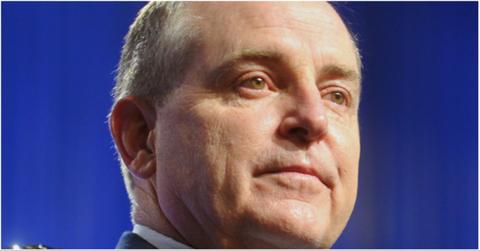Mark Welsh Stepping Down Highlights Political Tensions at Texas A&M University
"This is the right moment for change."
Published Sept. 19 2025, 12:29 p.m. ET

Leadership changes are never simple — but this one struck a nerve. The sudden resignation of Texas A&M University President Mark A. Welsh III raised eyebrows far beyond campus, prompting a wave of questions, commentary, and controversy.
If you’ve been wondering why Mark Welsh is stepping down, the answer says a lot about the pressure university leaders face when politics and academic life collide.
As of September 18, 2025, Mark's departure is official. Chancellor Glenn Hegar announced on X (formerly Twitter) that Mark had submitted his resignation and would step down that Friday.
In his statement, Chancellor Hegar thanked Mark for his “selfless service,” praised his role in strengthening the university’s national reputation, and said both he and the Board of Regents believed “this is the right moment for change.”
He added that a national search for a permanent president would begin soon, with an interim leader appointed in the meantime.
Why is Mark Welsh stepping down? A viral video and political pressure led to this decision.
This all started with a moment that went viral. On Sept. 8, 2025, a student challenged Professor Melissa McCoul over gender-related content in a children’s literature course. The confrontation was recorded and quickly circulated online after Rep. Brian Harrison shared it on X.
What followed was a wave of backlash directed at the university — and at Mark personally.
At first, Mark declined to take immediate action. Within a day, however, he reversed course and fired McCoul. That didn’t satisfy critics like Lt. Gov. Dan Patrick, who accused Mark of being “ambivalent” and too quick to defend the professor.
Gov. Greg Abbott had previously pressured the university over its diversity recruitment efforts, and while he couldn’t fire Mark directly, he does appoint the Board of Regents, who can.
According to reporting from the Texas Tribune on Sept. 18, the political pressure was mounting behind the scenes. Despite efforts to manage both internal support and external outrage, the combination proved unsustainable.
The campus community backed Mark, but the outside critics claimed victory.
Within the university, the response to Mark’s resignation was supportive — not of the decision, but of the man himself. Texas A&M’s Executive Committee of Distinguished Professors sent a letter on Sept. 18 urging the board to keep him in place, saying he had shown thoughtful, principled leadership.
A separate letter from dozens of student leaders echoed the same message, calling him transparent, steady, and inspiring.
But outside voices — particularly from state lawmakers — saw things differently.
In an interview with the Texas Tribune, Representative Harrison claimed credit for the resignation, pointing to his continued posting on social media.
“If I had done what every one of my critics was trying to get me to do, Mark would still be the president today,” he said, arguing that his approach proved more effective than traditional channels.
Board Chair Robert Albritton pushed back, insisting the regents didn’t respond to political pressure. Still, for many, the timing and tone of the decision suggest otherwise.
A national search is now underway for Mark Welsh's replacement at Texas A&M.
As of September 2025, no interim president has been named, though a national search is underway. The university has stated that it remains committed to its core values, adding that the board would continue to work to ensure “Texas A&M is well positioned for the future.”
Still, the circumstances surrounding Mark’s resignation raise questions that go far beyond one leadership change. In a state where political scrutiny over universities has intensified, all eyes are on Texas A&M to see what happens next and who will take over for Mark.
